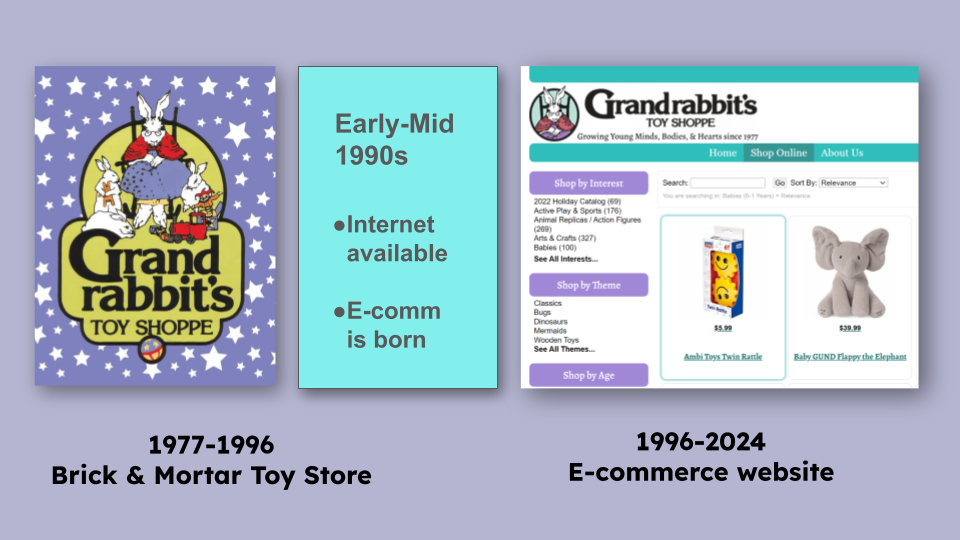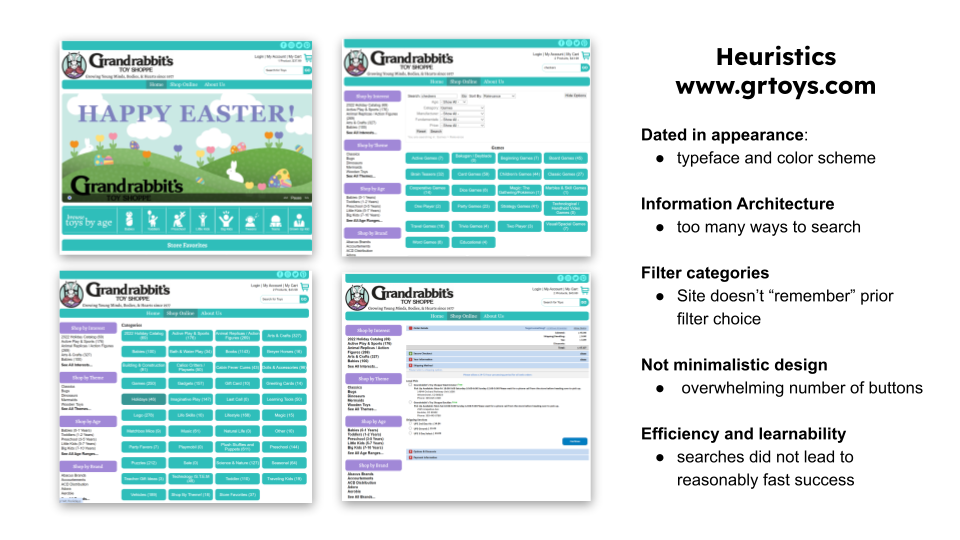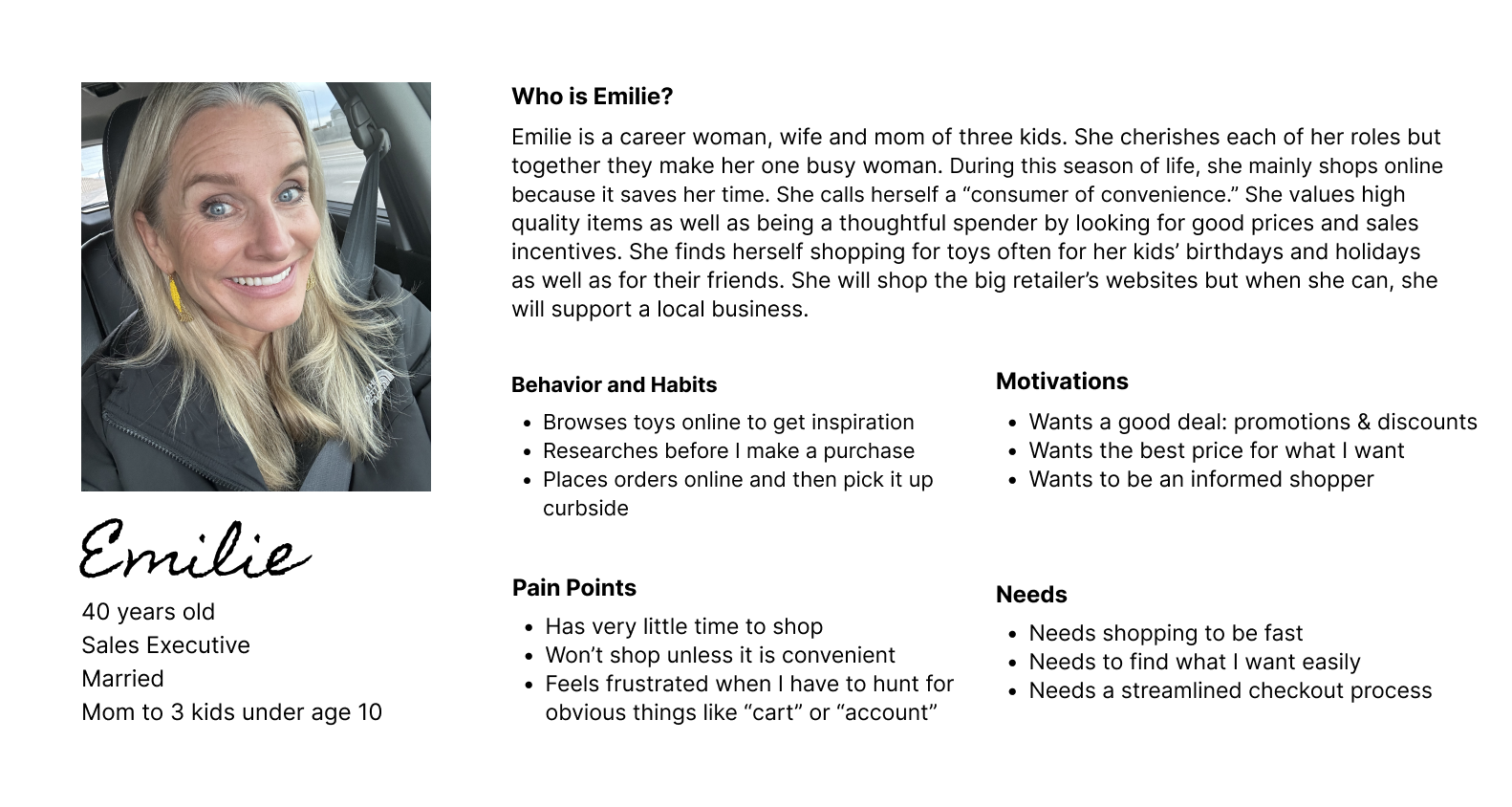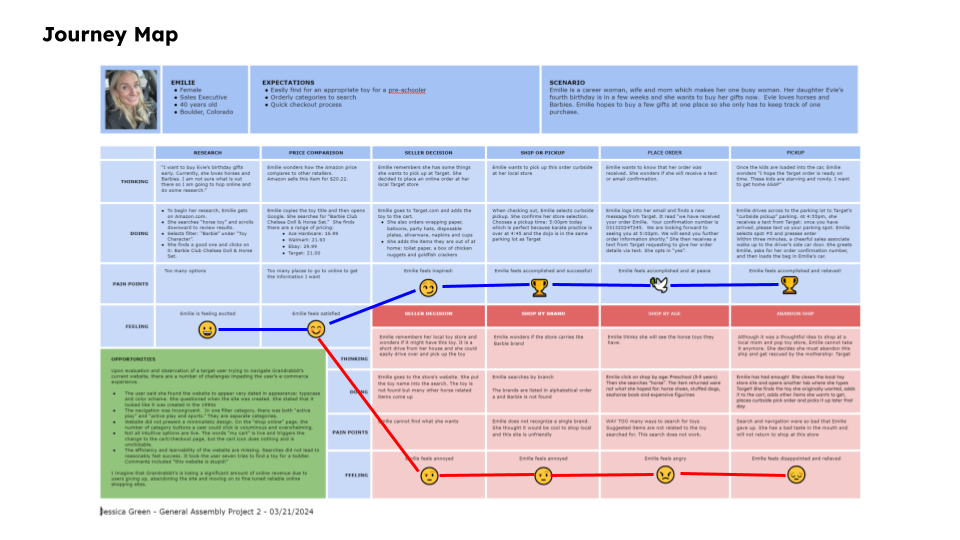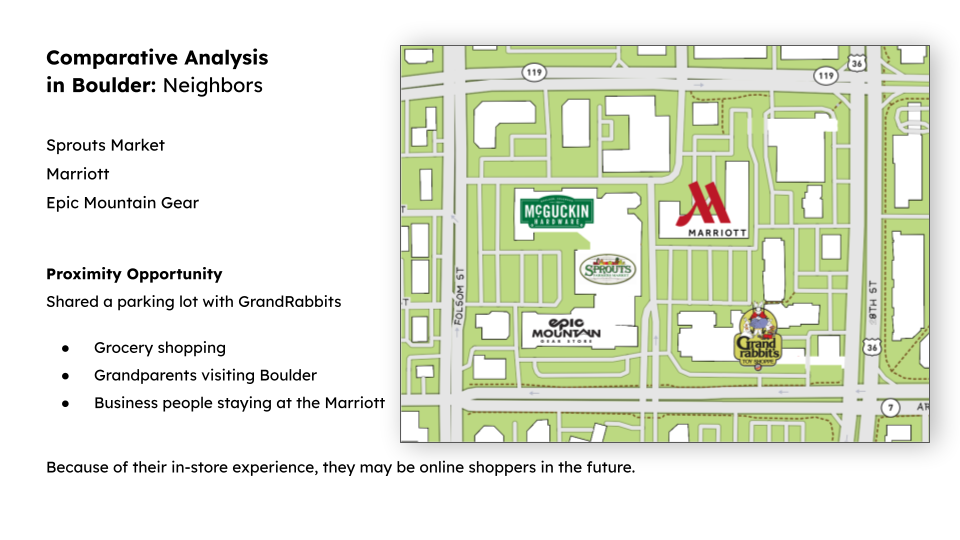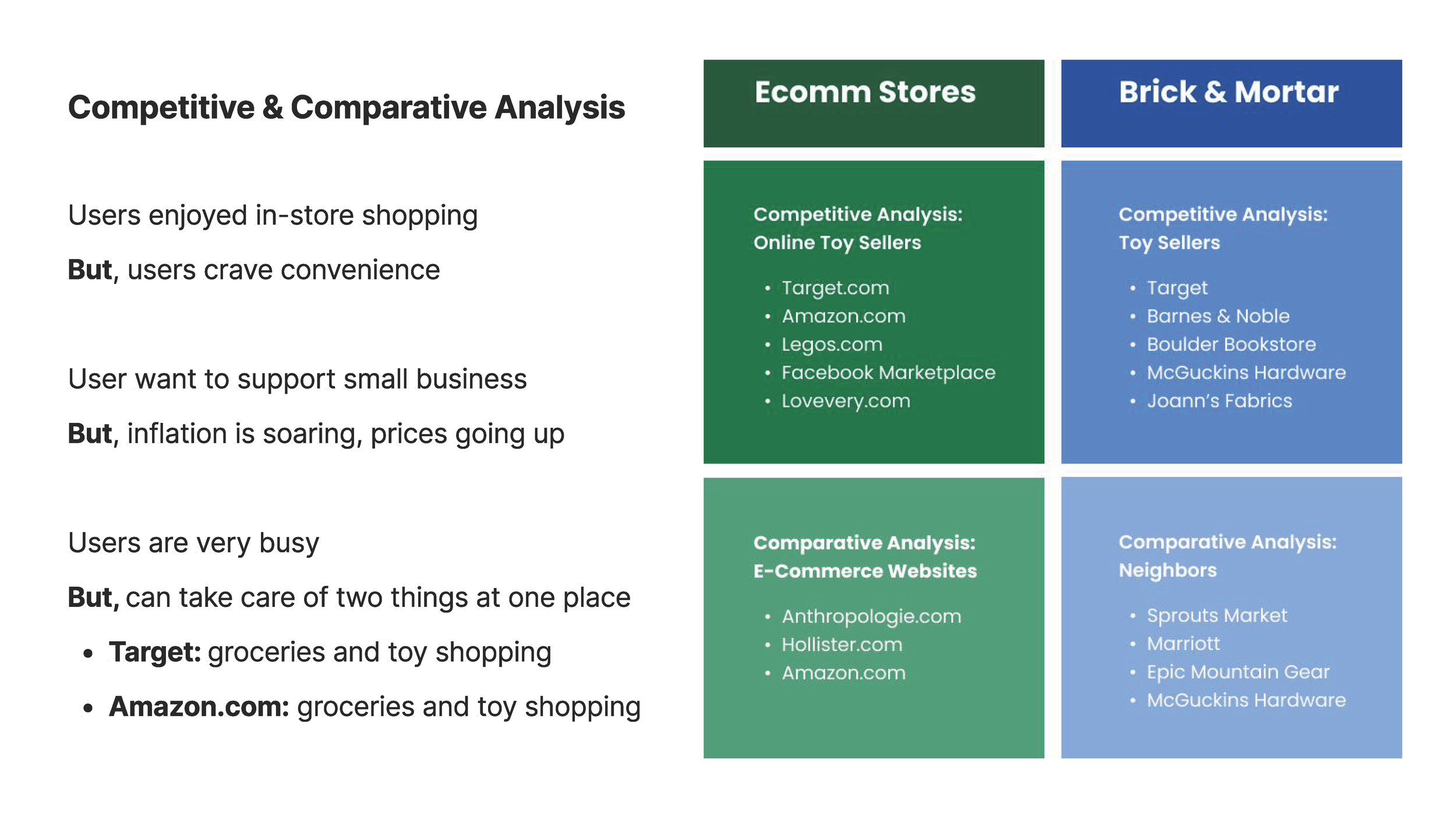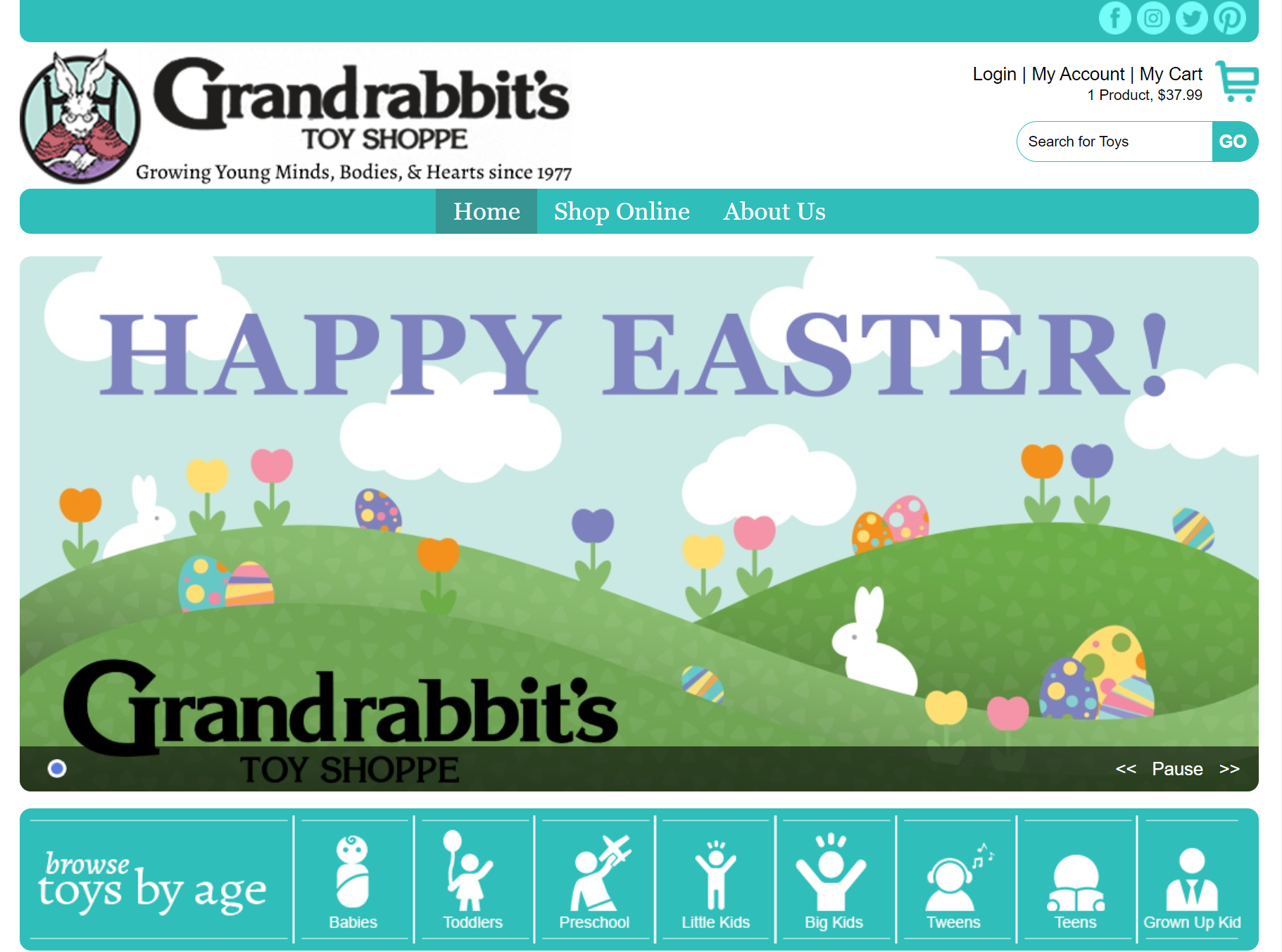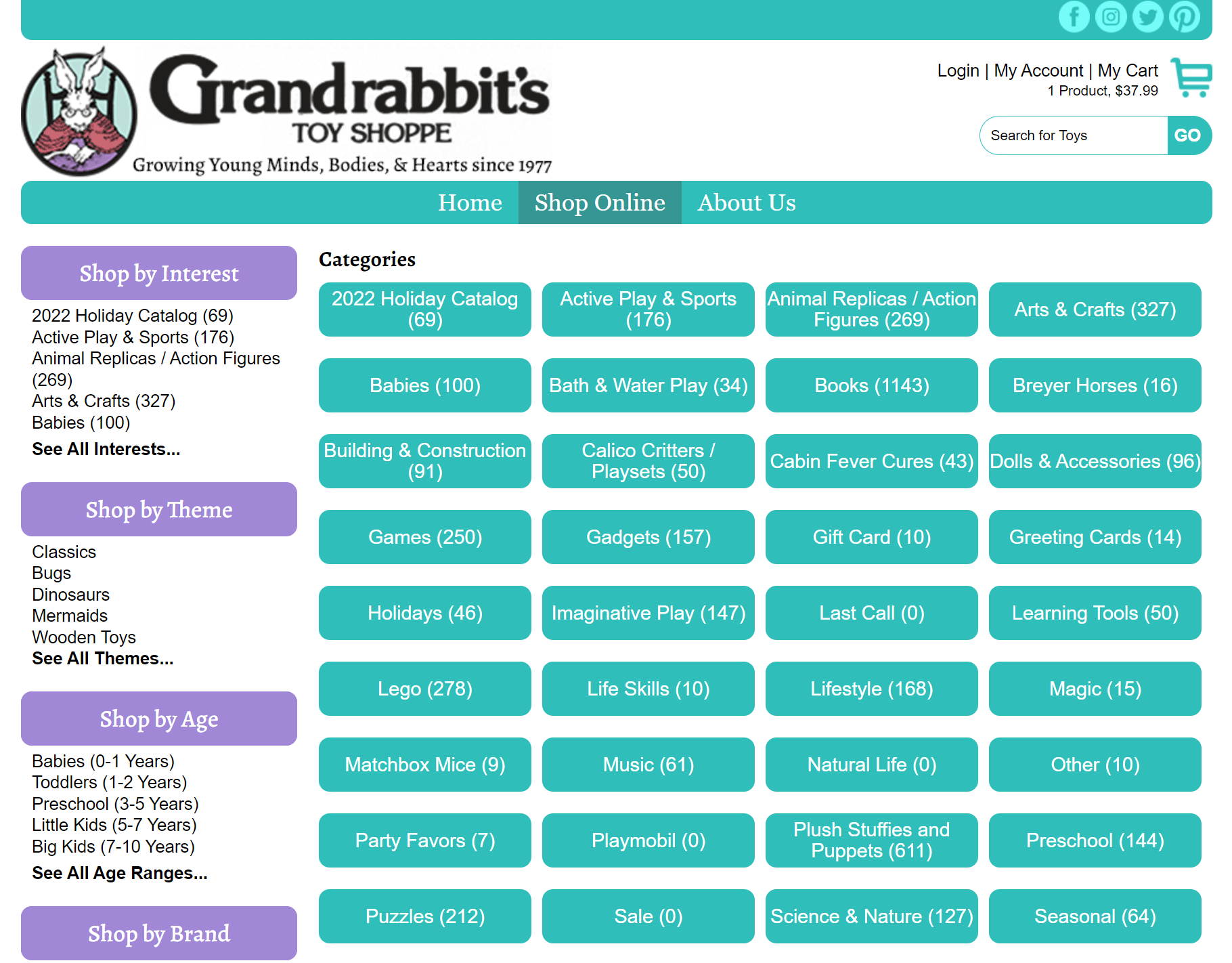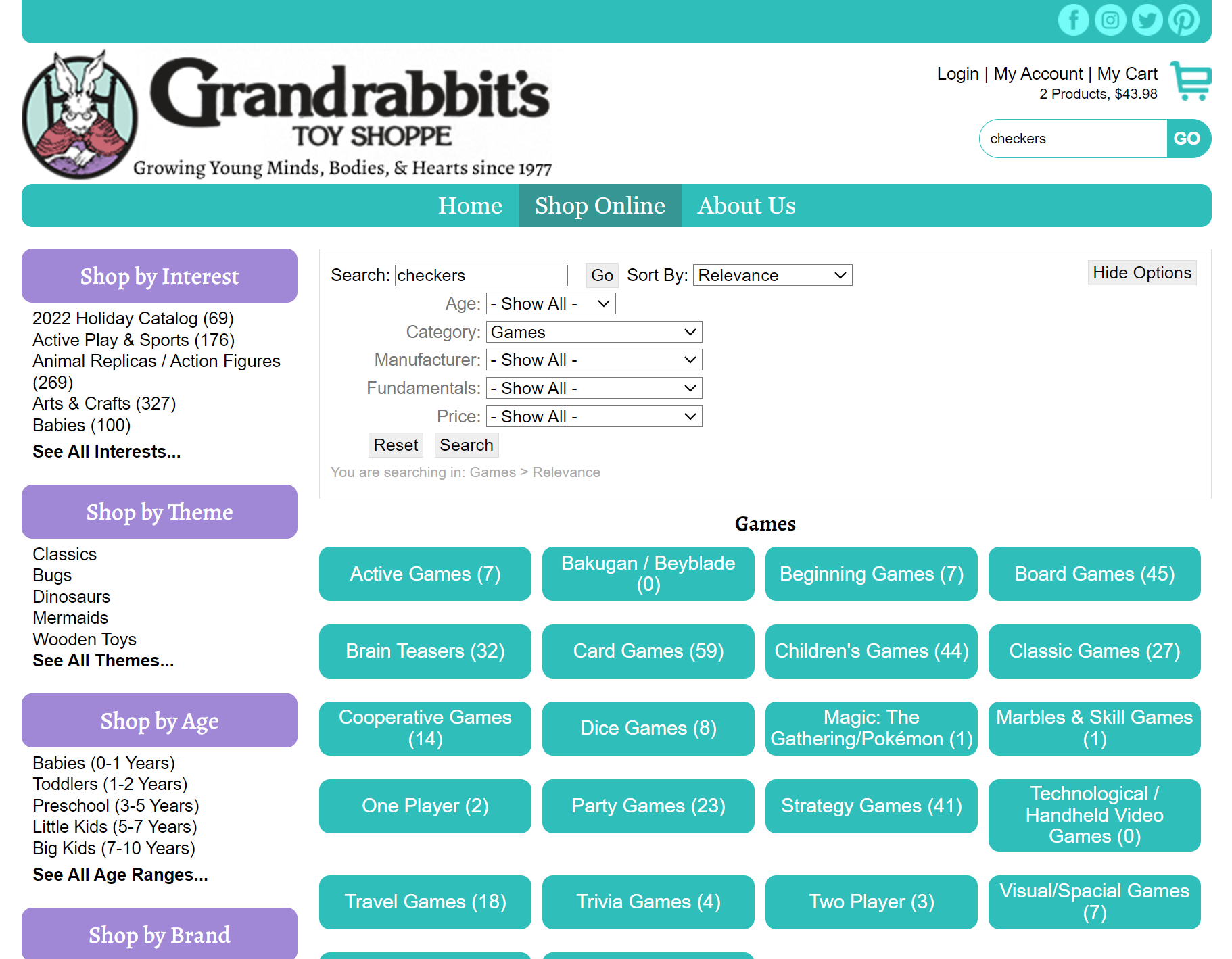
Grandrabbit’s Toy Shoppe
Role: UX Researcher
Date: March 2024
Duration: Three-Week Contract
Location: General Assembly UX Intensive
Project: User Research for E-commerce Redesign
Synopsis
Grandrabbit’s Toy Shoppe opened in 1977. In the middle of its tenure, the internet was born and e-commerce took the world by storm. It built an e-comm site, and today’s version appears dated and dysfunctional. To ensure its legacy, the site must be redesigned. We conducted user research to drive the new website.
Small Business: Surviving in an Amazon World
Toy stores are magical, and these special places are disappearing as e-commerce nears perfection. Consumers desire convenience over time spent shopping outside the home. In Boulder, Colorado, there is a mighty gem beating the odds: Grandrabbit’s Toy Shoppe. However, it must make some changes to ensure its legacy. Amazon.com fine-tuned the art of online shopping, resulting in lower prices and fast delivery. Grandrabbit’s joined the e-commerce arena by building a website.
Grandrabbits Toy Shoppe
Foundress Lynne Milot opened the toy store in October 1977. The toy industry was composed of giants: Mattel, Hasbro and Fisher Price. She had to compete against huge corporations: FAO Schwarz, KB Toys and Toys “R” Us. But, Boulder was a town that treasured local small businesses. Within this challenging environment, this underdog was driven by her business’s values:
Philosophy: to make all children a global priority
Goal: Be a catalyst for positive social change.
Commitment: provide high-quality playthings that contribute to a child’s learning & development.
Considering Boulder and its residents, I interviewed seven multigenerational participants with kids. Six women were Caucasian, and one woman was Indian. A key target user group was unintentionally excluded from the user research: males. Due to project time constraints, this key target user group was missed. The opinions and feelings of grandpas, dads, and uncles would have been very valuable in balancing the perspectives of the women interviewed. With the data collected, we created our persona, Emilie.
Every waking hour of modern life is scheduled in the name of productivity. The resulti is a relentless quest to find balance. Technology has allowed us to do more in less time. Instead of using this “extra” time to rest or recreate, our society has embraced productivity. Invention has changed how we live. For example, the introduction and adaptation of the automobile has allowed us to travel farther and faster. For an agricultural society, replacing a horse with an automobile could lessen the need to keep the horse. If the horse were sold, horse care chores would cease and its caretaker would gain hours of “free time.” Modern people fill their waking hours with work, family, friends and fun. This full, productive life is made easier with technology. Emilie’s draw to online shopping is the gift of convenience and time.
The Internet
Lynne Milot had successfully operated Grandrabbit’s for 14 years when life as she knew it was about to change radically. In 1991, the World Wide Web became available to the public. Two years later in 1993, the first browser was introduced. Communication changed in an instant with electronic mail. I remember scanning CU Boulder’s business school computer lab and predicted, “I think this is going to change human relationships and not in a good way.” I did not anticipate that the way we shop for goods and services would also change. In July 1994, Jeff Bezos founded Amazon in his garage.
The world was changing fast and by 1996, most businesses had a website. If Lynne wanted to continue successfully operating her store, she had to join the dot com revolution and start selling toys online.
Competitive and Comparative Analysis
The internet ushered in shopping from the comfort of home. Although many of our users shared that they enjoyed in-store shopping, their lives are full and, therefore, crave convenience. Our Competitive and Comparative Analysis examined online retailers and brick-and-mortar stores because Grandrabbit’s operates physical stores and an e-commerce website.
Competitive Analysis
As Boulder is an active town, Boulderites frequently bike and walk around town to shop and dine. They prefer to shop locally; however, soaring inflation has challenged this choice. Can I afford to support the mom-and-pop shop? I know Amazon.com will have a better price. We examined the local brick-and-mortar competitors, both big box and niche shops. Other mom-and-pop shops sell toys in town. However, none exclusively specialize in toys.
Comparitive Analysis
“Why are you analyzing a grocery store, hardware store, hotel and outdoor equipment store?” The answer is proximity opportunity. GrandRabbit’s shares a parking lot with these businesses. The patrons visiting this strip mall are likely connected to kids. Here are some scenarios:
A mom needs to grocery shop and buy a child’s birthday gift. She remembers Sprouts Grocery Store and Grandrabbit’s Toy Shoppe are in the same strip mall. She accomplishes both tasks in one outing.
Grandparents visiting Boulder take their grandkids to Grandrabbit’s to buy something special. On holidays and birthdays, they remember to shop for the grandkids’ gifts on Grandrabbit’s www.grtoys.com.
People traveling to Boulder on business stay at the Marriott. They promised the kids they’d bring back a present. The front desk tells them there is a local toy store across the parking lot. The physical proximity of these businesses creates visits that may later become online shopping for future purchases.
Heuristics
We conducted a heuristic analysis of the Grandrabbit’s current website. The main challenges users experienced were related to navigation. After seven attempts to find toddler toys, one user proclaimed, “this website is stupid.” There are many reasonable categories to search for toys: interest, child’s age, brands, theme and price. When compared to competitor’s websites, three themes emerged: Appearance, categorization of items and ease of Checkout. This insight will influence the redesign.
User’s Journey
Based on the heuristics of the current website, we anticipate that Emilie may be frustrated if she chooses to shop on Grandrabbit’s website. The journey map below chronicles Emilie’s two paths to purchasing her daughter’s birthday gift. The path of least resistance is found on www.target.com while www.grtoys.com discouraging and infuriating. The frustration led her to abandon the website.
Discovery Wrap-up
We gained a deep understanding of all the players in Grandrabbit’s world: its owner/operator, its origin story, its patrons, its hometown, its competitors, the advent of the internet and its jump into e-commerce. This insight will inform the next stage of UX design: Define and Design. The revamped website will allow customers to shop efficiently, find exactly what they are looking for quickly and retain customers who visit the website by curating a pleasant, intuitive, frictionless experience.
